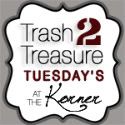I thought this case would be of particular interest to our blog readers, many of whom are parents and many of whom tend to start blogs and post articles about parenting issues, although not as their “day job.” This case also illustrates some of the important IP (intellectual property) issues that could apply to blogs which I discussed in our previous post.
Lisa Belkin is a professional blogger who had been writing the “Motherlode” blog for the NY Times since August 2008.

In September 2011, Ms. Belkin departed from the NY Times to write a competing blog for HuffPost (which is owned by AOL) called PARENTLODE.
The New York Times alleges that AOL is infringing its MOTHERLODE service mark with the adoption of the PARENTLODE mark for virtually the same type of blog. It is alleged that the similarity of the marks is so close that the readers of each blog will be confused into thinking that the blog is written by the same publication. The NY Times further contends that this was a deliberate act of unfair competition.
Afterall, the NY Times created with MOTHERLODE about three years prior to PARENTLODE.
The NY Times seeks to enjoin AOL from continuing to adopt and use the MOTHERLODE mark as well as requiring it to abandon its trademark application with the U.S. Patent and Trademark Office for that mark. Injunctions are the typical remedy sought upon the discovery of trademark infringement.
That said, the legal fees for this “dispute” even if settled could likely be in the tens of thousands of dollars or more.
In my opinion, depending upon how many other marks exist for blogs with the word “LODE” in it, I believe the NY Times may have a decent case. In fact, according to Ms. Belkin’s original PARENTLODE post for the Huffpost, she may have deliberately wanted the PARENTLODE blog to be associated with the MOTHERLODE blog because she is the author of both and therefore consumers are correct to attribute both blogs to the same source.
While Ms. Belkin and Huffpost could validly argue that there is no trademark infringement because the source of the two blogs are the same and therefore consumers are not wrong or confused in believing that, that argument could only be successful if Ms. Belkin is considered the rightful owner of the trademark rights in the NY Times blog and those rights transferred with her to Huffpost. This involves some employment law and contract issues which I obviously cannot know without being privy to that information. But as an “employee” of the NY Times, the traditional arrangement is that the NY Times would own the blog and its service mark. Even the copyright in the written material of the blog is owned by the NY Times as employer under the Copyright Law’s “Work-for-Hire” doctrine and I do not recall if that can be changed by a contractual arrangement.
Another issue is whether a blog even constitutes a “service” within the meaning of the Lanham Act (our federal trademark law) which defines “Commerce.” As I was writing this article, I actually entered into a debate with another trademark attorney about this very issue when we both were answering a question related to this on a lawyer directory web site where people can post legal questions. The other lawyer questioned whether simply posting content on a web site for anyone to review, i.e. in the format of a blog, constitutes a product or service offered in “ordinary commerce.” I cannot answer these questions briefly without explaining the technical legal meanings of “Commerce” in the Lanham Act but suffice it to say that I doubt there is any issue about the MOTHERLODE and PARENTLODE blogs being a service. However, this could be an issue for many of the amateur bloggers like Adrienne and me and our readers. Lisa Belkin’s blog is clearly “Commerce” not because any fees are required to read her blog but because her blog likely promotes subscriptions to the publication for which she works as well as draws advertising dollars to it.
It is naturally difficult to predict the outcome of this case but my guess is that this case will settle in the near future as virtually 95% of these cases do. One might ask why so many of these cases are brought or defendants select the marks they do, especially if one side seems so much more meritorious than the other, and when the cases typically are settled or one side backs down? I believe the answer to that is that many businesspeople like to “test the waters” and challenge other rights holders. I suspect that the means of settlement in this case could be that the NY Times permits Ms. Belkin to use the PARENTLODE mark or some less similar mark and requires certain parameters around that use. Perhaps Ms. Belkin will need to insert a disclaimer around the title of her blog that she is not affiliated with the NY Times. The NY Times and Huffpost could also settle with some type of monetary arrangement or licensing agreement. Another typical settlement, which is unlikely in the case of two well-known companies but more likely when one party is relatively unknown, is for the junior user (i.e. PARENTLODE) to be permitted to only use the mark but not register it because it may be more important to the senior rights holder to keep the USPTO register clear of any similar marks (to maintain the strength of its own mark).
The point in this story is to remember to be conscious of the trademark rights of others whenever creating a name or brand of a product or service arguably offered in ordinary “commerce.” While the NY Times and Huffington Post might have the financial resources to absorb the cost of any risk taken and errors committed because of the name they select as a mark, most of us bloggers probably do not. Therefore, whenever starting a new business, offering a new product or service in your business, transferring the business or the like, it is important to consult trademark counsel to review any possible issues surrounding the adoption, transfer or expansion of a mark.
Alex Butterman is a trademark attorney with Staas & Halsey LLP (http://www.staasandhalsey.com), a Washington, D.C. IP boutique law firm, and a former trademark examining attorney at the U.S. Patent and Trademark Office. Alex has been assisting U.S. and foreign businesses of all sizes in a wide variety of industries in intellectual property matters since 1995. Alex is admitted to the bars of Washington, D.C., New York and New Jersey and also is an active member of the International Trademark Association. Alex can be contacted at work directly by e-mailing him at abutterman@s-n-h.com.
The opinions expressed are those of the author and do not necessarily reflect the views of Adrienne, his firm, its clients or Adventures in DIY. This article is for general information purposes and is not intended to be and should not be taken as legal advice.

















